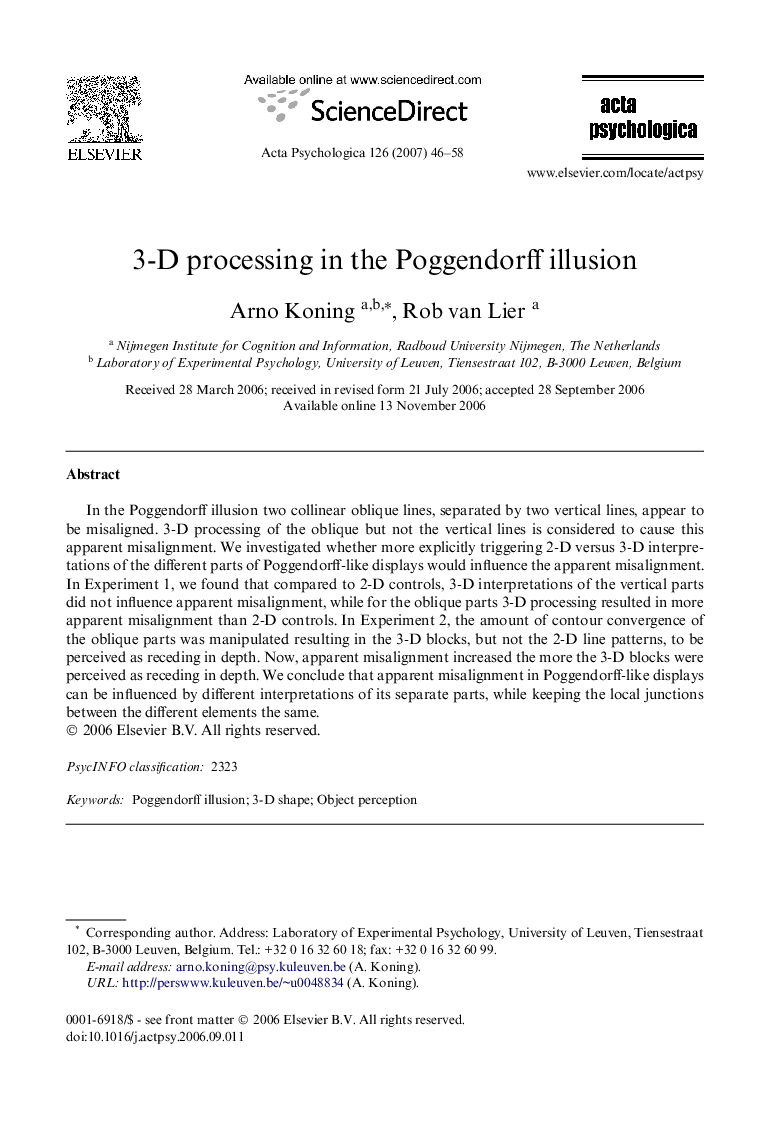| Article ID | Journal | Published Year | Pages | File Type |
|---|---|---|---|---|
| 920642 | Acta Psychologica | 2007 | 13 Pages |
In the Poggendorff illusion two collinear oblique lines, separated by two vertical lines, appear to be misaligned. 3-D processing of the oblique but not the vertical lines is considered to cause this apparent misalignment. We investigated whether more explicitly triggering 2-D versus 3-D interpretations of the different parts of Poggendorff-like displays would influence the apparent misalignment. In Experiment 1, we found that compared to 2-D controls, 3-D interpretations of the vertical parts did not influence apparent misalignment, while for the oblique parts 3-D processing resulted in more apparent misalignment than 2-D controls. In Experiment 2, the amount of contour convergence of the oblique parts was manipulated resulting in the 3-D blocks, but not the 2-D line patterns, to be perceived as receding in depth. Now, apparent misalignment increased the more the 3-D blocks were perceived as receding in depth. We conclude that apparent misalignment in Poggendorff-like displays can be influenced by different interpretations of its separate parts, while keeping the local junctions between the different elements the same.
